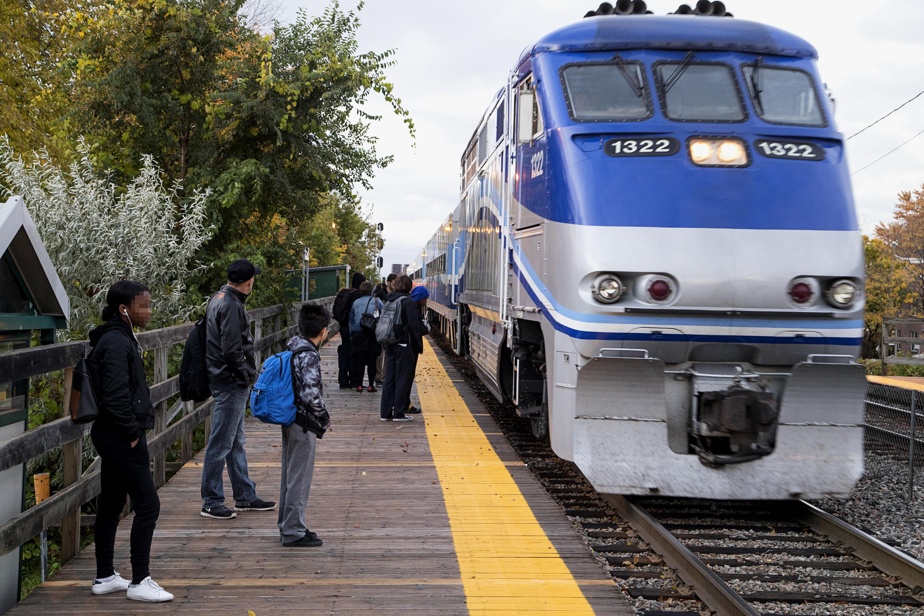Is the commuter train starting to get back on track? This is what the exo carrier is hoping for, at a time when its five lines are showing a 23% increase in ridership in the first quarter of 2024. Strongly affected by the pandemic, this mode of transport still remains little used.
In a preliminary report released on Friday, the organization confirms that “the various commuter train lines welcomed nearly 1.8 million passengers during the first quarter of 2024, an increase of 23% compared to the same period in 2023.”
This is rare good news for commuter rail, which has suffered a series of blows in recent years. First, the pandemic removed almost 90% of traffic, then the arrival of the Réseau express métropolitain (REM) disrupted the offer, putting an end to the service of line 6 Deux-Montagnes.
Since the start of REM work in the Mount Royal tunnel in May 2020, several train lines have made significant detours. On the Mascouche line, for example, it takes about 30 additional minutes, for a total of almost two hours, to get from Mascouche to Central Station. Its ridership is only 19% since the route was shortened.
Commuter rail is the mode of transport that has shown the weakest recovery since the pandemic. Ridership in 2023 was approximately 47% of the 2019 level – taking into account the closure of Line 6.
The year 2024 promises to be better. From January to May 2024, commuter trains have already recorded 2.79 million trips, an encouraging trend.

Not ideal conditions
Reached by telephone, the general director of exo, Sylvain Yelle, immediately said he wanted to ensure that this improvement was not fleeting. “We must keep in mind that these figures arrive while there is work at the Lucien-L’Allier station which is not helping either, so despite the conditions which are not 100% ideal, we see that there is growth. It’s encouraging,” he notes.
“On certain lines, like Saint-Jérôme and Vaudreuil-Dorion, things are going really well, we are at 65-70% ridership. Candiac is also doing well and Saint-Hilaire is stable, but in others, like Mascouche, it is still difficult. We are seeing a recovery, but it is certain that there are still efforts to be made to promote the quality of these services, which people have neglected a little during the pandemic,” admits Mr. Yelle.

PHOTO HUGO-SÉBASTIEN AUBERT, LA PRESSE ARCHIVES
Sylvain Yelle, general director of exo
We think it will be a very gradual recovery. The commuter train, for us, remains a heavy mode that we must see in the very long term.
Sylvain Yelle, CEO of exo
Despite everything, trains remain on time “nearly 96% of the time, which has contributed to maintaining customer satisfaction”, estimates exo, which aims to increase this figure further.
And the buses?
Meanwhile, the exo bus network is doing much better, its ridership threshold being back at 88% compared to the pre-COVID period, a jump of 11% in the last year. Paratransit, for its part, is improving significantly, at 105% – an increase of 13% compared to the same period in 2023 – while the total and weighted average of exo services is 71%.
On the bus side, it is “the best quarter in three years” for the service delivery rate, at 99.52%. This represents a 62% drop in the number of canceled trips for the same quarter in 2023, a year where the impacts of the shortage of drivers and mechanics, which is increasingly being resolved, were marked.
Bus punctuality could be improved. They are currently on time 82% of the time.
The service is “greatly dependent on road congestion and the consequences of numerous road construction sites, in particular that of the Île-aux-Tourtes bridge,” recalls the carrier, which says it is even more affected during the summer season.
Almost a year after its bus redesign imposed by the entry into service of the REM, which had caused numerous complaints among users, the situation seems to be stabilizing. Already, last February, the carrier claimed to observe a drop in complaints of around 80% and an increase in traffic of between 6 and 9%, depending on the sector.
